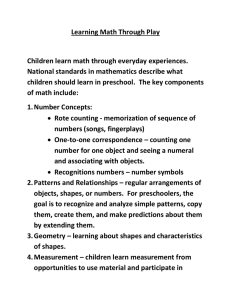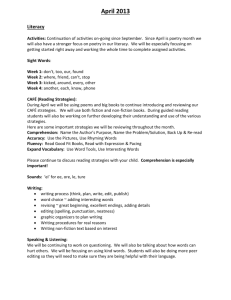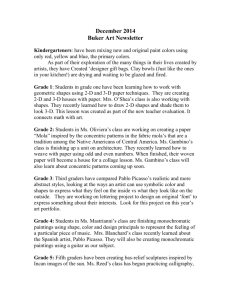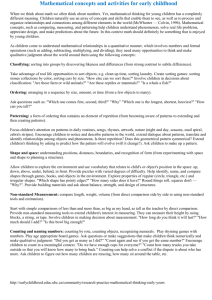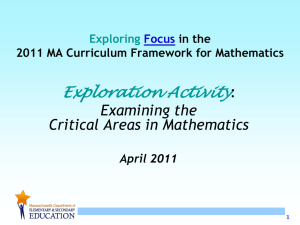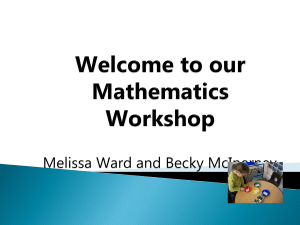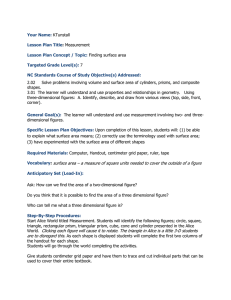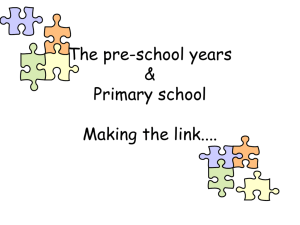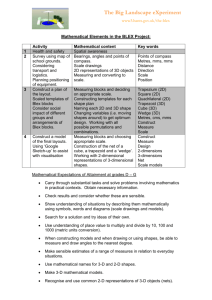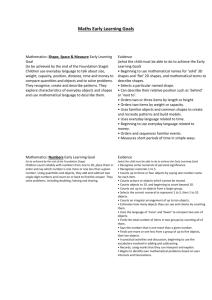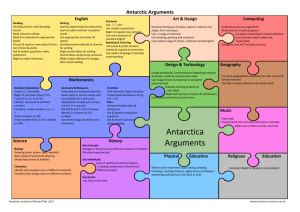Mathematics_Primary language
advertisement
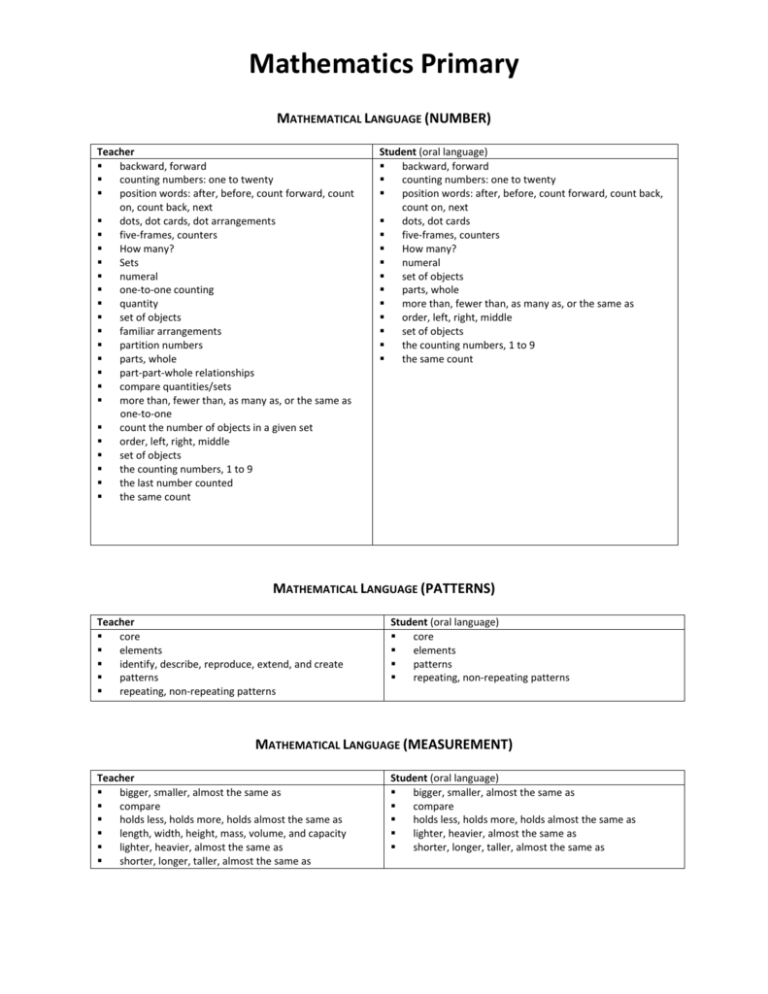
Mathematics Primary MATHEMATICAL LANGUAGE (NUMBER) Teacher backward, forward counting numbers: one to twenty position words: after, before, count forward, count on, count back, next dots, dot cards, dot arrangements five-frames, counters How many? Sets numeral one-to-one counting quantity set of objects familiar arrangements partition numbers parts, whole part-part-whole relationships compare quantities/sets more than, fewer than, as many as, or the same as one-to-one count the number of objects in a given set order, left, right, middle set of objects the counting numbers, 1 to 9 the last number counted the same count Student (oral language) backward, forward counting numbers: one to twenty position words: after, before, count forward, count back, count on, next dots, dot cards five-frames, counters How many? numeral set of objects parts, whole more than, fewer than, as many as, or the same as order, left, right, middle set of objects the counting numbers, 1 to 9 the same count MATHEMATICAL LANGUAGE (PATTERNS) Teacher core elements identify, describe, reproduce, extend, and create patterns repeating, non-repeating patterns Student (oral language) core elements patterns repeating, non-repeating patterns MATHEMATICAL LANGUAGE (MEASUREMENT) Teacher bigger, smaller, almost the same as compare holds less, holds more, holds almost the same as length, width, height, mass, volume, and capacity lighter, heavier, almost the same as shorter, longer, taller, almost the same as Student (oral language) bigger, smaller, almost the same as compare holds less, holds more, holds almost the same as lighter, heavier, almost the same as shorter, longer, taller, almost the same as MATHEMATICAL LANGUAGE (GEOMETRY) Teacher • 2-D shapes: triangles, squares, rectangles, circles • 3-D objects: pyramids, cones, prisms, cubes, cylinders • how they are alike / how they are different • smooth sides, sharp corners, ability to roll, ability to slide or ability to fit together, shapes that come up to a point • sorting groups of objects • sorting rule • 2-D shapes: circle, triangle, rectangle, square • 3-D object • 3-D objects: sphere, prism, pyramid, cone, cylinder, and cube • big, little, round, like a box, like a can, flat Student (oral language) • • • • • • 3-D objects how they are alike / how they are different smooth sides, sharp corners, ability to roll, ability to slide or ability to fit together, shapes that come up to a point sorting groups of objects 3-D objects big, little, round, like a box, like a can, flat
